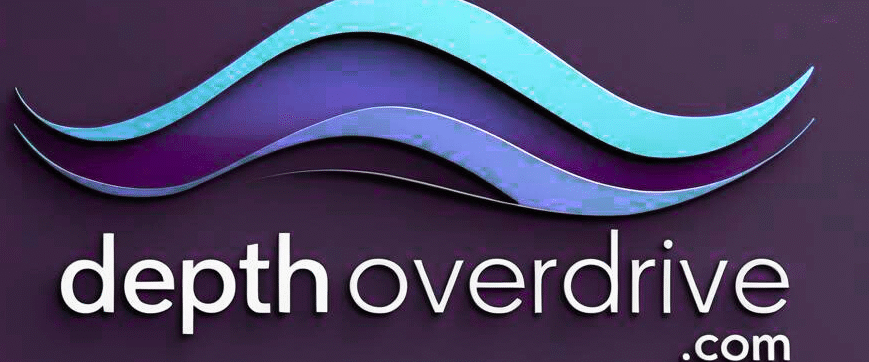Starting a blog is exciting, but turning it into a source of income requires careful planning and timing. Many bloggers jump into blog monetization too early, only to face disappointment and burnout. To avoid this, it’s essential to follow a solid blog monetization guide that helps you understand your audience, build trust, and choose the right time to earn.
Whether you’re considering affiliate marketing for bloggers, display ads on blogs, or selling digital products, your success depends on offering value first. Knowing the best time to monetize a blog can make the difference between failure and long-term growth. Let’s explore smart strategies to monetize with purpose and avoid common mistakes.
Why Timing Matters in Blog Monetization
Timing blog income streams is essential to stability. Monetizing too early often leads to poor results. New bloggers may struggle to convert visitors into buyers. Build a foundation first. When your readers recognize your expertise, you can monetize without losing readers.
A strong blog monetization guide emphasizes trust before monetization. When readers trust you, they click ads, buy digital products, and join memberships. As you set the monetization criteria—like traffic benchmarks and email subscribers—you ensure your revenue from blogging grows long term.
Understanding Your Blog’s Purpose and Audience

To understand your blog audience, write with their needs in mind. Always think: Who is reading this? Are they beginners, experts, or lonely hobbyists? When you know them, you can craft content that converts. This sets the stage for discussions on affiliate marketing for bloggers or the Amazon Associate program.
Define your blog content strategy early. Plan topics that meet real pain points. Create voice and tone habits. Share genuine stories that inspire trust-building through content. As your readership grows, you’ll accumulate email list building, community engagement, and social proof. That audience becomes your resource when it’s time to monetize with purpose.
Create Value Before Creating Revenue
A profitable blog starts by giving first. You need to create helpful blog posts filled with tips, examples, and clarity. Before ads or affiliate promotions, readers must feel the value. High-value blog posts are the stepping-stone to real income from blogging.
This phase is where you work on a sustainable blogging schedule and blogging routine tips. You might write one detailed post weekly, then send a friendly email to your list. Only when those systems are in place, like a blogging content calendar and weekly blog planning, should you introduce monetization strategies for bloggers.
Proven Blog Monetization Methods
There are many ways to monetize without ads right away. You can start with affiliate marketing for bloggers, linking to products you use. Then, explore sponsored blog content when your audience is engaged. Selling digital products or an online course for bloggers brings higher returns, but it needs trust first.
You might also launch a premium content membership. A resource page monetization strategy can earn steady revenue. Display ads on blogs can help later. Plan multiple passive income streams so your revenue from blogging doesn’t rely on a single source.
A Deep Dive into Using Ads on Your Blog

Ads work best when you already have solid traffic. Use display ads on blogs only after your readership grows. Too many ads early can hurt the user experience. AdSense or networks like Mediavine offer different payouts, so research each carefully.
As you use monetization strategies for bloggers, watch your engagement scores. If bounce rates rise or comments disappear, your audience might feel overwhelmed. Balance ad density with good design and helpful content.
Should You Wait 6 Months Before Monetizing?
Six months is a common milestone. Use it to build trust and content volume. Create at least 50 posts with product review posts and value-driven content. Launch email list-building tools and small communities. Build social proof and blog engagement strategies.
However, should you monetize a blog early depends on you. If traffic and engagement remain low after six months, continue creating helpful content. If you hit strong growth, introduce affiliate marketing or ads gradually.
Key Takeaways: When Is the “Right” Time?
The right time is unique to each blogger. Check for steady traffic, email signups, and engagement. Review your monetization criteria regularly. Ask: Can readers trust me? Am I solving real problems?
If the answers are yes, you are ready. Whether you’re joining the Amazon associate program or offering sponsored content, do it with confidence. Smart growth comes from aligning timing, purpose, and audience.
What is Blogger Burnout and Why Does It Happen

Blogger burnout symptoms include fatigue, stress, or emotional exhaustion from content creation. What causes burnout in bloggers often includes unrealistic deadlines, nonstop writing, or skipping breaks. Over time, creatives feel drained, lose motivation, and may stop posting altogether.
This creative burnout interferes with productivity and the joy of blogging. Recognizing burnout recovery tips, like taking breaks from blogging, will help maintain mental wellness for content creators.
My Personal Experience with Burnout
Like many, I hit a wall after blogging for years. I faced blogging fatigue that made even posting a tough task. My energy vanished, and my blog grew silent. Thankfully, I used burnout recovery tips like daily walks and reality-check conversations.
That experience taught me the importance of preventing burnout as a blogger. I rebuilt with SMART blogging goals and a sustainable workflow.
The Real Cost of Burnout in Blogging
The cost of burnout isn’t just lost posts. It’s damaged focus, broken routines, and lost trust online. If readers see gaps, you lose authority, and blog engagement strategies crumble. Creative rest, though unseen, saves your brand reputation and mental health.
10 Actionable Ways to Prevent Blogger Burnout
Strategies like scheduling breaks, blogging, time management, and content planning in advance help fight burnout. Invite guest bloggers to lighten your load. Set SMART blogging goals and use tools to streamline your content calendar. Enjoy smaller deliverables so your brain stays fresh and inspired.
Mental Health Tips for Bloggers
Mental wellness isn’t optional. Take regular breaks from blogging, set work-life balance goals, and track blogging routine tips. When stress builds, practice mindfulness or talk to fellow creators. Healthy minds lead to improved writing output and sustainable habits.
Creating a Sustainable Blogging Workflow
Design a workflow that suits your life. Utilize a blogging content calendar and a weekly blog planning template to stay organized. Allocate time for writing, editing, research, and rest. Streamlined systems reduce friction and stress, making consistency easier.
Tips From Successful Bloggers Who Beat Burnout
Successful creators share simple advice. Take mini-vacations, limit daily writing hours, and automate tasks. They say that blog writing productivity comes from rest paired with discipline. A community-driven blogging approach helps maintain accountability and joy.
Final Thoughts: Prioritize Yourself First

When to monetize your blog doesn’t follow a fixed timeline. It’s about your purpose, your audience, and your readiness. A smart blog monetization guide focuses on trust, value, and consistency. Remember, your Blogger’s mental health matters more than any traffic spike or income boost. Build your path with care and a sustainable, joyful process.
Meta Disc:
Discover smart blog monetization strategies, the best time to start earning, and how to monetize without losing your readers.
Welcome to Depthoverdrive,
I’m Syeda Naqvi, a passionate SEO content writer with 3 years of experience in crafting engaging, optimized, and reader-friendly content. I specialize in creating content that not only ranks on search engines but also provides real value to readers, with a strong understanding of keyword research, on-page SEO, and content strategy.

